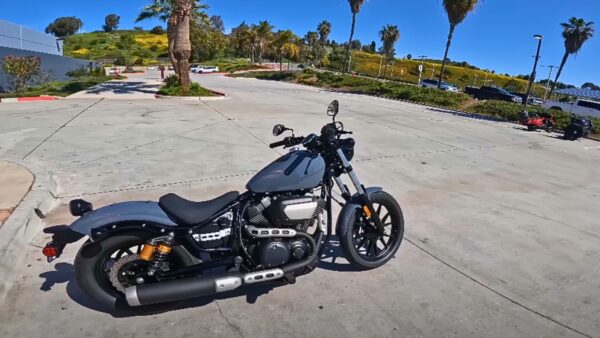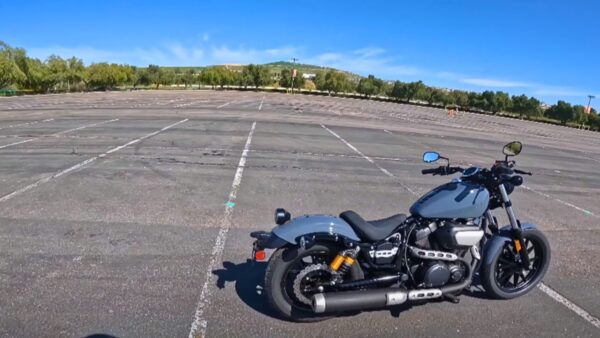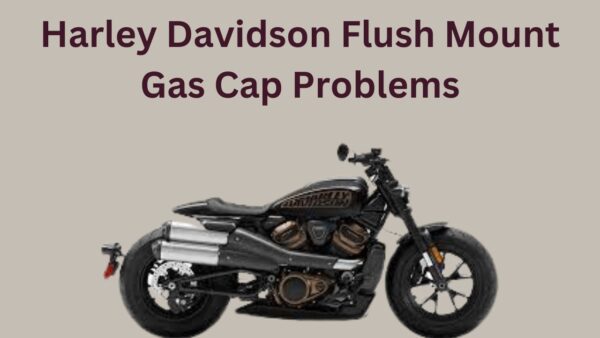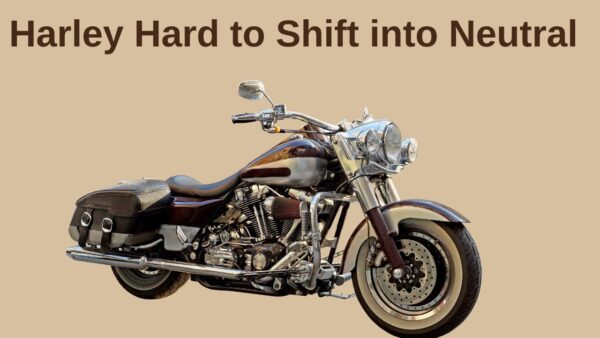The Yamaha Bolt is a popular motorcycle that has captured the hearts of riders worldwide with its sleek design and impressive performance.

However, like any vehicle, it’s not without its issues. In this guide, we’ll take a closer look at some common problems that Bolt owners have experienced, and what can be done to fix them.
Let’s begin!
Yamaha Bolt Problems
Yamaha Bolt’s common problems are overheating issues, death wobble, clunky gear shifts, and hard-to-start/especially in cold weather.
1. Overheating Issues
One of the common problems that Yamaha Bolt owners are facing is overheating issues. It can be can be a real headache for riders.
The root cause of overheating is low coolant levels. The coolant is like the bike’s way of sweating to cool down the engine.
If there’s not enough coolant, the bike can’t cool off properly. To fix this, you should regularly check the coolant levels and ensure they are topped up.
Another cause is radiator trouble. The radiator is responsible for keeping the engine cool, but if it’s blocked or broken, the bike can get too hot.
So, you should clean the radiator regularly and remove any dirt or debris that may be blocking the airflow.

Moreover, a stuck thermostat can prevent the coolant from flowing properly, leading to overheating.
If the thermostat is malfunctioning, you should replace it to restore proper coolant circulation. Finally, water pump issues can also contribute to overheating.
The water pump is responsible for moving the coolant around, and if it’s not working correctly, the coolant won’t circulate effectively, causing the bike to overheat.
In this situation, you may have any water pump problems addressed and fixed promptly.
2. Death Wobble
The death wobble is a scary situation that Yamaha Bolt riders may encounter. It refers to the uncontrollable shaking of the motorcycle’s front part.
One possible cause of the Death Wobble is riding your Yamaha Bolt at high speeds.
The bike may struggle to handle these speeds, causing certain parts at the front to move in unintended ways.
Another factor to consider is worn-out wheel bearings. These bearings allow the wheels to spin smoothly, and when they deteriorate, they can lead to the bike wobbling.
Tire problems can also contribute to the Death Wobble. The tyre pattern can play a role, as certain patterns increase the likelihood of wobbling.
Moreover, improper wheel balancing or incorrect tyre pressure can result in an unstable ride. Damaged wheel forks are another potential cause of this problem.
The forks are responsible for holding the front wheel in place, and if they are damaged, they may not perform their function effectively.
Lastly, rider mistakes can trigger the wobble. For example, letting go of the handlebars while slowing down can initiate the shaking motion.
To resolve this you should first, consider changing your tyres to ones that are better suited to your Yamaha Bolt.
Next, upgrade to new wheel bearings to make a significant difference. Also, ensure your tyres are properly inflated and have the wheels checked for balance.
Even a small adjustment in wheel balance can prevent wobbling. Finally, if the wheel forks are damaged, you can replace them.
3. Clunky Gear Shifts
This refers to a lack of smoothness when changing gears, often accompanied by a noticeable and sometimes loud “clunk” sound, especially when shifting down to first gear.
Clunky gear shifts can occur due to a few factors:
The gears in your Yamaha Bolt have square edges, which can contribute to a less fluid shifting experience and the clunking noise you may hear.
Related: Yamaha Aerox 155 Issues
If you ride aggressively or fail to use the clutch gently it can be worn out. A worn clutch may not function optimally, leading to rough gear shifts.
On the other hand, proper lubrication is crucial for smooth gear shifting. If the oil used is too thin, it may not provide adequate protection, resulting in harder shifts.
Using the recommended oil can significantly improve the smoothness of your bike’s gear changes.
Here is how to resolve this problem:
Firstly you should conduct routine inspections to identify any signs of wear in the gears and clutch. If you notice anything amiss, you might need to repair or replace it.
If the clutch is the culprit, you should adjust or replace it with a new one. Ensure that the clutch cable is correctly set, allowing for the appropriate amount of slack.
On the other hand, you should use oil that is specifically recommended for your Yamaha Bolt, as it ensures optimal performance.
You should also keep your bike in good condition; which may involve timely oil changes and ensuring the clutch and gears are well-maintained.
Sometimes your ride can also impact gear shifts. So, you should shift gears smoothly and avoid forcefully engaging the bike into gear.
4. Refuses to Start
One possible reason for your Yamaha Bolt is the battery. Over time, batteries can lose their charge, especially if your bike has been sitting idle for a while.
If the battery doesn’t have enough power, your motorcycle won’t start. To fix this, you can either charge the battery or replace it with a new one.
Another issue could be old gasoline. If your bike has been sitting with the same gas in the tank for a long time, that gas might have gone bad.
Old gasoline doesn’t burn the same way fresh gas does, and this can prevent your engine from starting.
So, the solution here is to drain out the old gasoline and fill your tank with fresh gas.
A spark plug can also cause your bike to refuse to start. Spark plugs are responsible for creating the spark that ignites the fuel in your engine.
If they’re dirty or corroded, they won’t work properly. You should consider cleaning or replacing the spark plugs to solve this issue.
Next, let’s talk about fuel system blockages. The fuel system includes parts like the fuel pump and fuel lines.
If these parts get clogged with dirt or debris, fuel can’t reach the engine, and your bike won’t start. In this situation, you can clean or replace affected parts of the fuel system.
Lastly, a dirty carburettor can prevent your bike from starting. The carburettor is responsible for mixing air and fuel for the engine.
If it’s dirty, this mix won’t be right, and your bike might not start. You can clean the carburettor to resolve this problem.
Yamaha Bolt Uswer Review
The Yamaha Bolt is a highly praised motorcycle that has been on the market for several years. It is known for being reliable, easy to handle, and powerful enough, making it a great choice for both beginners and experienced riders.
The bike’s design and performance have kept it interesting for a wide range of motorcycle enthusiasts. Users appreciate the Bolt for its combination of practical features and enjoyable riding experience.
It’s a motorcycle that manages to balance performance and ease of use, making it a popular choice among riders looking for a reliable and enjoyable ride.
Yamaha Bolt Technical Specifications Chart
Here are the Bolt technical specifications:
| Specification | Detail |
| Engine Type | 58-cubic-inch (942cc) air-cooled SOHC V-twin; 4 valves |
| Bore x Stroke | Sculpted 3.4-gallon teardrop fuel tank, blacked-out V-twin engine, 12-spoke wheels, belt drive, steel fenders |
| Compression Ratio | 9.0:1 |
| Fuel Delivery | Fuel injection |
| Ignition | TCI: Transistor Controlled Ignition |
| Transmission | Sculpted 3.4-gallon teardrop fuel tank, blacked-out V-twin engine, 12-spoke wheels, belt drive, steel fenders |
| Final Drive | Belt |
| Fuel Economy (Estimated) | 51 MPG |
| Chassis | Compact, stable chassis designed for light maneuverability and stable handling |
| Seat Design | Slim body and low seat design for upright riding posture |
| Customization | Ready to customize, ideal canvas for personalization |
| Unique Features | Sculpted 3.4 gallon teardrop fuel tank, blacked-out V-twin engine, 12-spoke wheels, belt drive, steel fenders |

Ahtsham Younas is a passionate blogger and content writer. He loves to ride motorcycles and learn the mechanical process behind the motorcycles.
He has been writing articles in the motorcycle industry since 2019 and has learned many things about motorbike niches.


